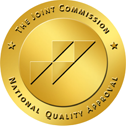
Alcohol is often viewed as a part of socializing — parties, sporting events or celebrations can include alcohol. Your peers may expect you to drink when you are with them or escalate drinking through drinking games. Whatever the situation you find yourself in, it is crucial to understand your relationship with alcohol.
Alcohol and Socialization
Alcohol may be something you drink when you are out with friends, as part of a meal or as a way to make you feel good. In some cases, you may drink due to mental health issues like depression or anxiety. Whatever the reason, alcohol is deeply ingrained in society.
A drink at the end of the workday, after class or on the weekend can escalate into binge drinking or addiction. You can justify your drinking with the need to forget about work or only drink when you are with your friends. However, when you use alcohol instead of healthy alternatives, you can have alcohol use disorder. Alcohol use disorder is when you no longer have control over your alcohol use regardless of social, work or health repercussions.
Consider how often you get together with friends without drinking. Is it often, or is alcohol always included? Your friends can have an impact on your alcohol consumption. If you associate drinking with your friends, choosing to become sober can impact your friendships. The decision to stop drinking can cause problems in your social group. Some people are uncomfortable around those who aren’t drinking; you can feel left out of the social circle. Your sobriety can change the dynamics of your friendships. When you are sober, past activities, friendships or outlooks can no longer hold the same appeal.
Socialization without drinking is possible. Some groups support having fun or getting together without alcohol. If your current group of friends aren’t open to sober fun, you can find people who are through a simple internet search. Maybe you entered treatment for alcohol addiction; while you are in treatment, you can speak with your therapist or group about socializing without alcohol. Through conversation, you can learn where to find people who will support your recovery.
The Basics of Alcohol — Standard Drink Size and Consumption Levels
Standard Drink Size
Do you know what the guidelines are for drink size? How much is too much? Some drinks have higher alcohol content than others. This is why you should know how much alcohol is considered standard. In the United States, a “standard” drink contains approximately 14% of pure alcohol. To better understand how much alcohol is in an average serving of beer, wine or liquor, you can refer to this guide.
- 12 ounces of beer — light beer is not included in this category — contains approximately 5% alcohol
- 5 ounces of wine usually is 12% alcohol
- 1.5 ounces of liquor is about 40% alcohol
Drinking Levels
If you are pregnant, might be pregnant, underage, recovering from alcohol addiction or are at high risk of alcohol abuse, you shouldn’t drink. In recent years, the Centers for Disease Control (CDC), National Institute of Health (NIH) and the National Institute on Alcohol Abuse and Alcoholism (NIAAA) have participated in alcohol awareness campaigns that include information about who shouldn’t drink. These agencies also explain what the different drinking levels are based on consumption and use.
Moderate Alcohol Consumption
The Dietary Guidelines for Americans 2020-2025 states intake amounts for moderate alcohol consumption are:
- Women — one or fewer drinks a day
- Men — two or fewer drinks a day
These guidelines apply when you choose to have a drink; they aren’t meant to imply you should drink every day.
Binge Drinking
The Substance Abuse and Mental Health Services Administration says binge drinking is when a woman consumes four or more or when a man consumes five or more alcoholic drinks consecutively or within about two hours of each other in a month.
Heavy Alcohol Consumption
Heavy alcohol use is over four drinks a day for a man and over three for women. Heavy drinking can also include binge drinking five or more times during a month.
Think About Your Drink
Drinking becomes a habit or a routine without you noticing. Your daily rituals can include having a drink before, during or after dinner. Do you know how many glasses of wine are in a wine bottle? According to the NIAAA, there are five glasses in a bottle. Do you want to lose weight or get a better night’s sleep? Alcohol consumption can decrease your success for the goals you set.
Alcohol consumption, in moderation, can have little to no effect on your social, mental and physical health. When you use alcohol to socialize, cope with feelings like depression or anxiety, or fit in, you have a drinking problem. If you recognized your alcohol use as anything other than moderate drinking, you should contact a substance treatment center to learn how to stop drinking.
If you recognize any of the signs of alcohol addiction, reach out for help. Treatment centers offer mental health and addiction treatment that can increase your well-being. Casa Palmera in Del Mar, California, can aid you in determining if you can benefit from addiction treatment. Your unique needs are addressed when you undergo an assessment that determines the level of care and service you require. We have residential, outpatient and continuing care treatment tailored to your specific needs. Our center’s location makes entering treatment easy and convenient. We focus on your comfort and provide comprehensive, evidence-based therapies and round it out with yoga, meditation and other holistic approaches. We also continue to keep you safe by adhering to COVID-19 protocols. Call (855) 508-0473.




